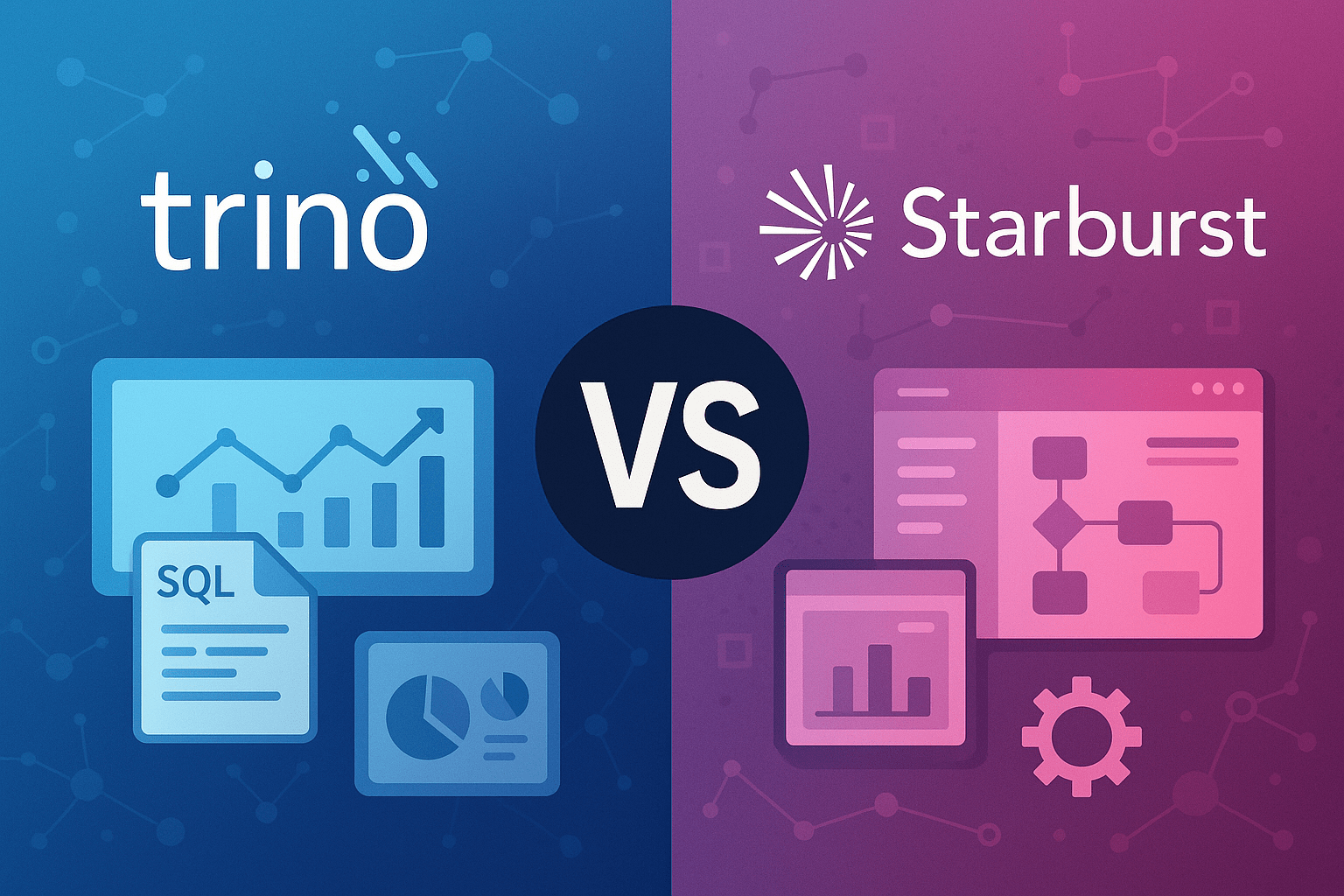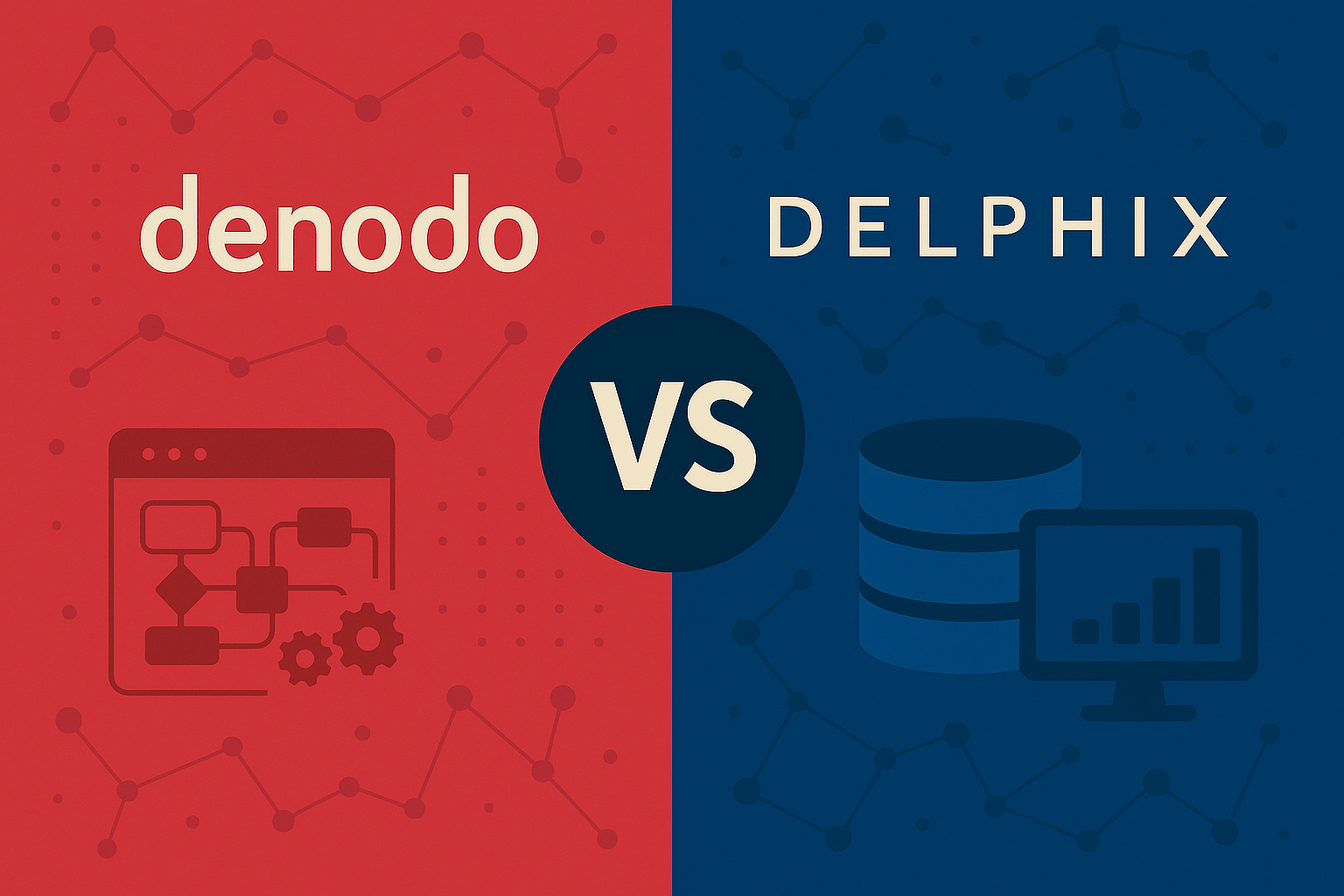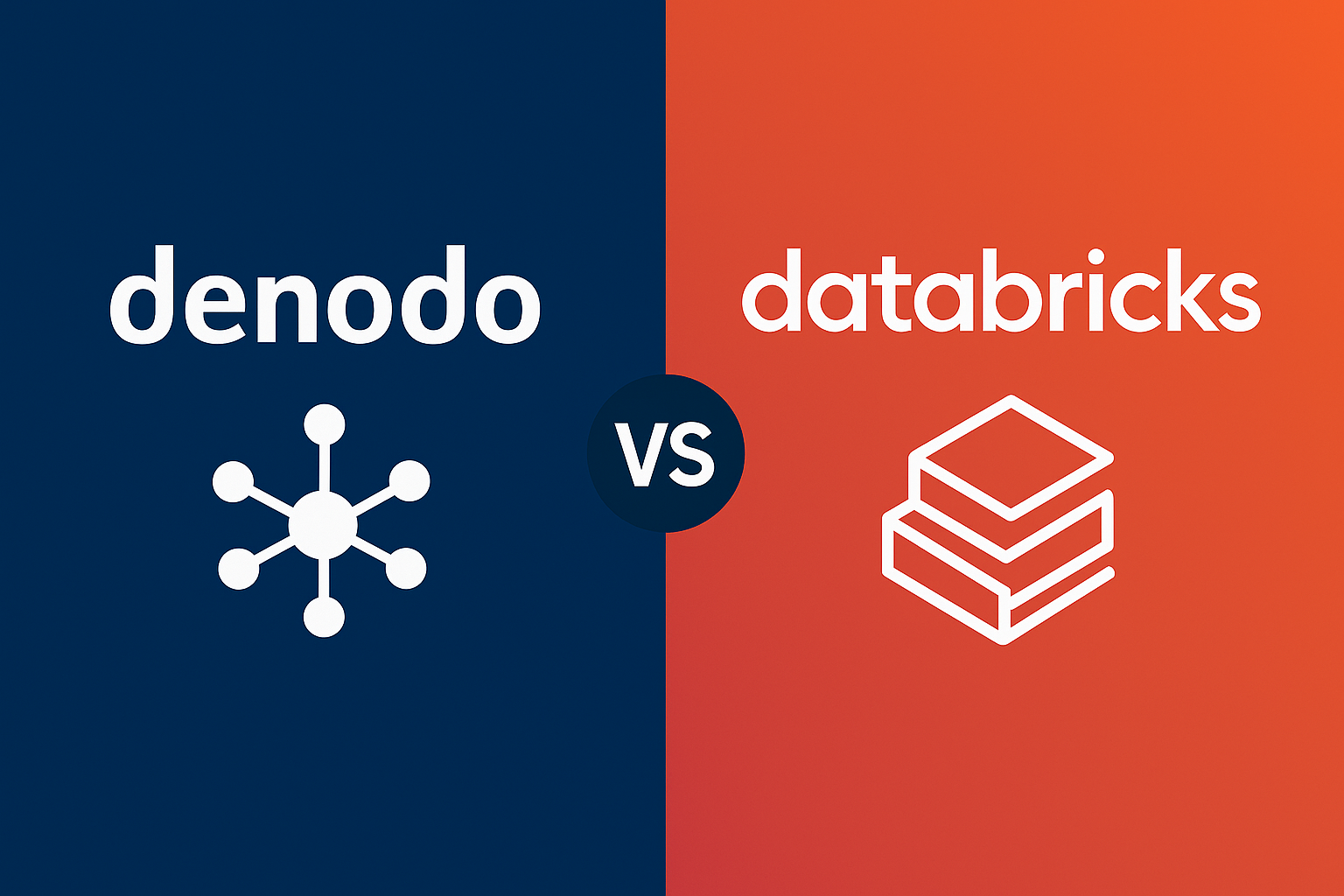Alteryx vs SQL: Which Data Tool is Right for You?
Choosing the right input data tool can make the difference between struggling with complex data tasks and achieving seamless data analytics success. Both Alteryx and SQL offer powerful capabilities for data management, but they serve different purposes and user types.
This comprehensive guide will help you understand which tool aligns best with your specific needs, technical background, and project requirements.
Data Tool Comparison
|
Feature / Capability |
Factory Thread |
Alteryx |
SQL |
|---|---|---|---|
|
Primary Focus |
Real-time factory data access and virtualization |
Visual workflow-based data analytics |
Structured data querying and database management |
|
Data Handling Approach |
Federated, real-time data streaming |
Drag-and-drop ETL and advanced analytics |
Declarative query language for direct DB access |
|
User Interface |
AI-generated visual flows for engineers and analysts |
Visual designer (no coding) |
Code-based SQL editors and query windows |
|
Ease of Use |
Built for engineers and ops leaders |
Accessible to analysts with minimal tech skills |
Requires technical skill and familiarity with SQL |
|
Real-Time Capabilities |
Yes, with factory floor integration |
Limited; batch mode preferred |
Possible with real-time DB setups |
|
Security & Governance |
Centralized access and controls for operations |
Governed user access and workflow control |
High security via database-level access control |
|
Deployment Options |
SaaS, edge, hybrid |
Desktop, server, cloud |
On-prem, cloud, hybrid |
|
Connectors & Compatibility |
MES, ERP, Siemens, Rockwell, SQL, APIs |
550+ data sources incl. SQL |
DBMS-specific; integrates with applications |
|
AI/Automation Support |
AI flow design, auto-triggered workflows |
AutoML, data cleansing, predictive modeling |
No AI/ML; requires integration or extensions |
|
Monitoring & Alerts |
Real-time alerts, dashboards, observability |
Workflow logs, limited alerting |
Monitoring via DB tools or third-party systems |
|
Industry Use Cases |
KPI dashboards, scheduling, predictive quality |
Marketing, finance, operations analytics |
Data warehousing, system backends, transaction logs |
|
Implementation Speed |
Days, with minimal IT dependency |
Days to weeks, depending on team skill |
Fast if SQL skills exist; requires DB setup |
|
Scalability |
Built for scaling across plants and machines |
Limited by memory or offloaded to DBs |
High—optimized for massive, structured datasets |
|
Pricing Model |
Enterprise license |
~$5,000–$6,000/user/year |
Free with DBs; licensing for DBMS vendors |
|
Customer Sentiment |
High satisfaction among engineers and ops teams |
Loved for usability and speed by business teams |
Valued by DBAs and developers for performance |
What Makes These Tools Unique?
SQL – Database Language Excellence

SQL stands as the foundation of modern data management, providing direct control over database operations. This structured query language gives you precise command over how you interact with your data source, making it the preferred choice for professionals who need granular control over their database operations.
Key benefits of SQL:
-
Direct database control and optimization capabilities
-
Customizable sql query complexity for specific requirements
-
Industry-standard language with universal compatibility
-
Seamless integration with sql server and other database systems
-
Robust security features for enterprise data protection
SQL’s strength lies in its ability to handle massive datasets efficiently. Enterprise deployments routinely process millions to billions of records daily, with sql code optimized for maximum performance through indexes, partitions, and parallel execution strategies.
Alteryx – Visual Analytics Platform

The Alteryx platform revolutionizes data analytics through its drag and drop interface, making advanced analytics accessible to users without programming backgrounds. Alteryx Designer transforms complex data preparation tasks into visual workflows that are both intuitive and powerful. Alteryx is a full-service analytics platform that focuses on data blending and advanced analytics, making it a versatile tool for diverse analytical needs. It is often used by users for optimizing data operations without requiring heavy coding.
Key benefits of Alteryx:
-
Visual workflow design that eliminates the need to write complex code
-
User friendly interface accessible to non-technical users
-
End-to-end analytics capabilities including data blending
-
Built-in advanced analytics tools and predictive modeling
-
Comprehensive data source connectivity and integration options
Working with Alteryx Designer can be remarkably rewarding for analysts who need to perform sophisticated data preparation tasks quickly. The platform excels at handling multi-source data wrangling and fits seamlessly into broader business intelligence processes. Additionally, Alteryx supports in-database processing, enabling users to perform analyses directly on large datasets without extensive moving of data. In Alteryx, users can connect to SQL Server databases using the Input Data tool, further enhancing its integration capabilities.
Alteryx vs SQL Usage: What’s the Difference?

Technical Requirements and Learning Curve
The technical barriers between these tools create distinctly different user experiences:
SQL Requirements:
-
Programming knowledge and database concepts required
-
Understanding of query optimization and performance tuning
-
Familiarity with database administration tasks
-
Knowledge of aggregate functions, inner join operations, and table relationships
Alteryx Requirements:
-
Visual workflow understanding with drag and drop capabilities
-
Business domain knowledge for effective analysis
-
Basic data concepts without programming complexity
-
Ability to work with the filter tool and similar functions
The learning curve reveals a significant difference in accessibility. SQL typically requires weeks of dedicated study for most non-technical professionals to develop proficiency, while basic alteryx designer skills can be mastered in hours. However, both tools require substantial time investment to achieve advanced capabilities.
Performance and Scalability Considerations
Performance characteristics vary significantly between these platforms:
|
Aspect |
SQL |
Alteryx |
|---|---|---|
|
Data Volume |
Optimized for massive datasets (millions+ records) |
Best for mid-size analytics (hundreds of thousands of records) |
|
Speed |
Highly efficient for in-database operations |
May be slower with large tables unless properly configured |
|
Memory Usage |
Leverages database engine optimization |
Processes data in-memory on user’s machine |
|
Integration |
Native database connectivity |
Requires connectors for data source access |
SQL’s performance advantage becomes clear when working with large tables and complex aggregate functions. The ability to perform operations directly within the database eliminates data transfer bottlenecks that can make other approaches time consuming.
Best Use Cases and Application Scenarios
Understanding when to use each tool depends on your specific requirements:
SQL Excels For:
-
Database administration and maintenance tasks
-
Complex queries requiring precise control over data retrieval
-
High-volume ETL processes and data transformations
-
Applications requiring strict security and audit capabilities
-
Scenarios where you need to write custom functions for specific business logic
Alteryx Excels For:
-
Data blending from multiple disparate sources
-
Rapid prototyping of analytics workflows
-
Visual data preparation and cleansing tasks
-
Automated reporting and analytics delivery
-
Projects requiring deeper insights without extensive programming
What Experienced Users Say
Professional feedback reveals distinct preferences based on user backgrounds and requirements:
SQL Professionals Value:
-
Direct database control and fine-tuned optimization capabilities
-
Universal compatibility across different database systems
-
Precise query optimization for maximum efficiency
-
Robust transaction integrity and security features
-
Seamless integration with existing enterprise IT infrastructure
Alteryx Users Appreciate:
-
Visual workflow design that makes complex processes transparent
-
Rapid development speed for analytics projects
-
Comprehensive analytics capabilities without coding requirements
-
Ability to integrate multiple data sources effortlessly
-
Built-in advanced analytics and predictive modeling tools
The choice often reflects the user’s technical background and organizational needs. Database administrators and data engineers typically prefer SQL’s precision and control, while business analysts and domain experts gravitate toward Alteryx’s accessibility and visual approach.
Performance Analysis and Real-World Impact
Speed and Efficiency Metrics
Real-world performance data reveals important considerations for tool selection:
SQL databases excel in transactional environments, processing thousands of transactions per second while maintaining data integrity. When properly indexed, sql queries can retrieve specific records from billion-record tables in milliseconds. The ability to run complex joins and aggregate functions directly within the database engine provides unmatched efficiency for large-scale operations.
Alteryx workflows typically handle datasets ranging from thousands to several million records in interactive desktop sessions. For larger datasets, the platform can push operations down to databases or leverage cloud compute resources. The visual nature of Alteryx Designer makes it easy to identify bottlenecks in your data flow and optimize accordingly. Alteryx's In-Database Join Tool enables blending and analysis against large sets of data without moving the data out of the database, providing performance improvements. Additionally, Alteryx allows users to run custom SQL queries within its visual data workflow environment, offering flexibility for advanced users. If you’re looking for data management solutions beyond Alteryx, there are several robust Delphix alternatives available on the market.
Integration and Workflow Considerations
Both tools integrate differently into organizational workflows:
-
Native support across virtually all database systems
-
Direct integration with business applications and websites
-
Seamless compatibility with development frameworks
-
Standard component in data warehousing architectures
-
Extensive connector library for diverse data sources
-
API connectivity for real-time data integration
-
Export capabilities to various formats and systems
-
Cloud deployment options for scalable processing
The Alteryx community provides responsive support, aiding users in overcoming challenges with the platform and ensuring smooth integration into existing workflows.
SQL Integration:
-
Native support across virtually all database systems
-
Direct integration with business applications and websites
-
Seamless compatibility with development frameworks
-
Standard component in data warehousing architectures
Alteryx Integration:
-
Extensive connector library for diverse data sources
-
API connectivity for real-time data integration
-
Export capabilities to various formats and systems
-
Cloud deployment options for scalable processing
The integration approach you choose will significantly impact your team’s ability to maintain and scale analytics processes over time.
Tool Requirements and Team Considerations
Technical Skill Requirements
Success with either tool depends on matching capabilities to team skills:
For SQL Success:
-
Programming expertise and logical thinking ability
-
Database design and optimization knowledge
-
Understanding of data relationships and schema design
-
Familiarity with specific database platforms (sql server, PostgreSQL, etc.)
-
Ability to debug complex queries and performance issues
For Alteryx Success:
-
Business domain knowledge and analytical thinking
-
Visual workflow design understanding
-
Data preparation and cleansing concepts
-
Basic statistics and analytics knowledge
-
Process design and automation mindset
Users have reported that Alteryx enables significant reductions in data analysis time, sometimes to minutes for complex tasks that previously took weeks, making it a highly efficient tool for time-sensitive projects.
-
Business domain knowledge and analytical thinking
-
Visual workflow design understanding
-
Data preparation and cleansing concepts
-
Basic statistics and analytics knowledge
-
Process design and automation mindset
Both tools require strong analytical thinking and understanding of data concepts. The key difference lies in whether your team prefers code-based or visual approaches to problem-solving.
Development and Maintenance Workflow
The development process differs substantially between these platforms:
SQL development involves writing, testing, and optimizing queries through iterative refinement. Version control systems easily track changes to sql code, making it straightforward to manage updates and collaborate across teams. The ability to reuse and modify existing queries makes SQL highly efficient for repetitive tasks.
Alteryx development centers on building and refining visual workflows through the drag and drop interface. The platform’s visual nature makes it easy to understand and modify existing processes, though traditional version control requires additional considerations. Workflows can be exported and shared between team members, supporting collaborative development approaches.
Which Tool is Right for You?
Choose SQL if you want:
✔ Direct database control and optimization - When you need precise control over how data is processed and stored
✔ Industry-standard querying capabilities - For environments requiring proven, widely-supported technology
✔ Custom database administration solutions - When your use case demands specialized database management
✔ Maximum performance for large datasets - For processing millions of records with optimal efficiency
✔ Seamless integration with existing systems - When working within established database infrastructure
Choose Alteryx if you want:
✔ Visual workflow development - When transparency and ease of understanding are priorities
✔ Rapid analytics deployment - For projects requiring quick turnaround and iterative development
✔ Comprehensive, code-free data preparation - When team members lack programming backgrounds
✔ Advanced analytics without complexity - For incorporating predictive modeling and statistical analysis
✔ Multi-source data integration - When you need to blend data from diverse systems and formats
Making the Strategic Decision
The choice between Alteryx and SQL isn’t always binary. Many successful organizations use both tools strategically:
-
SQL handles backend data management, ETL processes, and high-volume operations
-
Alteryx serves as the interface for rapid analytics, data preparation, and business user empowerment
Alteryx and SQL are often used together in the data analytics workflow, complementing each other’s strengths to deliver comprehensive solutions.
Consider your project timeline, team capabilities, data volumes, and long-term maintenance requirements. SQL offers maximum control and performance for large-scale operations, while Alteryx provides accessibility and speed for analytical workflows.
Both tools deliver powerful insights when properly applied. If your priority is precise control and database expertise, SQL remains the superior choice. If you value visual simplicity and rapid development capabilities, Alteryx will better serve your needs.
The most successful data teams understand that tool selection should align with both technical requirements and organizational capabilities. Evaluate your specific use case, team skills, and project constraints to make the decision that will drive long-term success in your data analytics initiatives.
Remember: The best input data tool is the one your team can effectively use to deliver consistent, reliable results that support your business objectives.
Factory Thread: A Manufacturer-First Alternative
.png?width=650&height=105&name=FactoryThread_Horizontal_Black%20(650%20x%20105%20px).png)
While Alteryx and SQL offer powerful analytics and data processing capabilities, Factory Thread stands apart as a dedicated manufacturing data platform—engineered to address the unique challenges of industrial environments.
Factory Thread is built for plant-floor teams who need real-time visibility, cross-system integration, and scalable AI-powered automation—without relying heavily on data engineers or SQL developers. It’s not just another analytics tool; it’s a factory-grade solution for digital transformation across production, quality, and operations.
Why Manufacturers Choose Factory Thread:
-
Purpose-Built for Manufacturing: Integrates with industrial systems like MES, ERP, PLCs, and historian databases (e.g., Siemens, Rockwell, OSIsoft), delivering ready-to-use insights without custom coding.
-
Real-Time, Federated Access: Virtualizes data across systems without replication—connect once, analyze everywhere.
-
Low-Code AI Flows: Empower engineers and process leaders to design and automate complex analytics workflows using a drag-and-drop interface.
-
Secure, On-Prem + Edge Deployment: Designed for the factory floor with audit trails, role-based access, and edge computing compatibility.
-
Live KPIs and Alerts: Monitor OEE, downtime, quality, and throughput with real-time dashboards and automated triggers.
Whether you're tracking yield in real time, building downtime root cause models, or federating MES and ERP data for reporting, Factory Thread delivers out-of-the-box capabilities that SQL and Alteryx cannot match in industrial environments.
In essence, Factory Thread is not a general-purpose analytics platform—it's a manufacturing execution enabler built from the ground up for factories.
Share this
You May Also Like
These Related Stories

Trino vs Starburst: Which Data Tool is Right for You?

Denodo vs Delphix: Which Data Management Platform is Right for Your Organization?



No Comments Yet
Let us know what you think